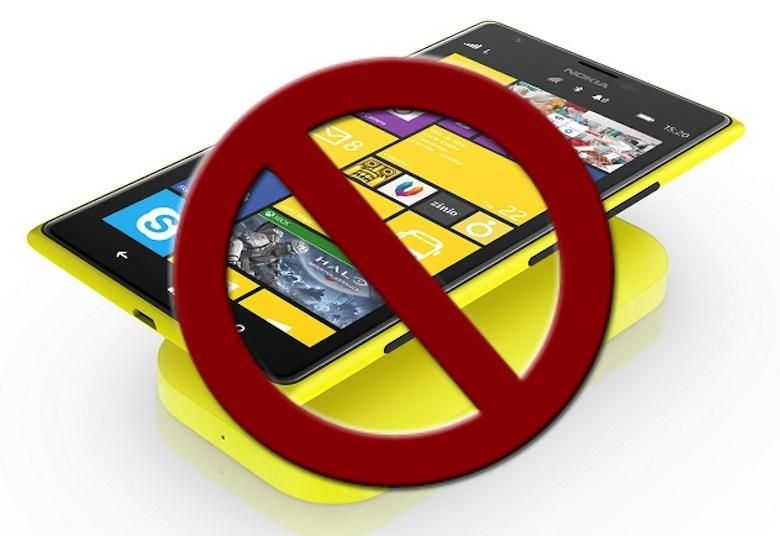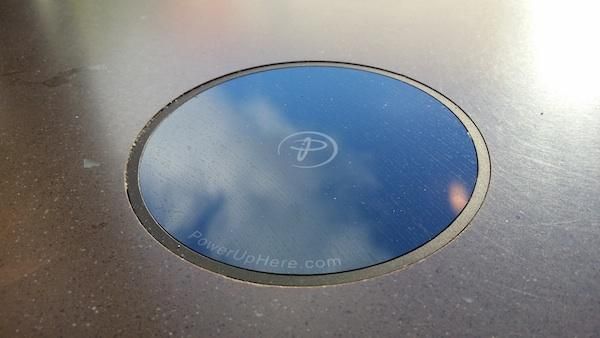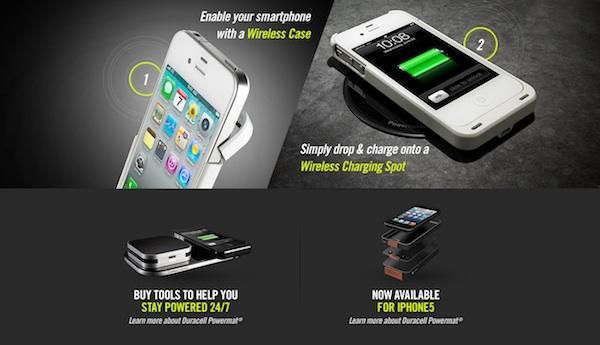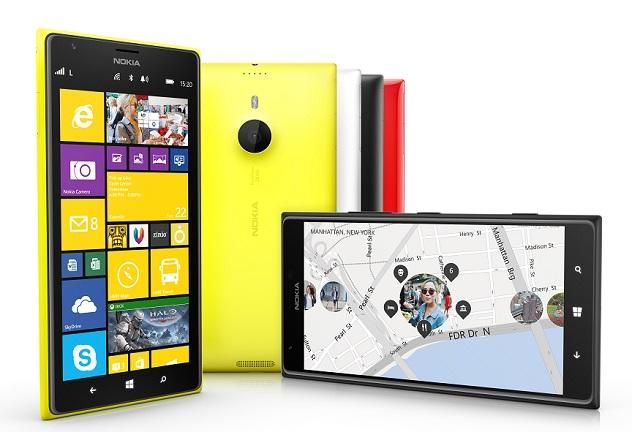I’m writing this editorial while sitting in a Boston-area Starbucks, which means two things: 1) yes, I’m one of those pretentious jerks who writes in public, and 2) I’m seated next to a wireless charging plate embedded in the tabletop.
The hardware is unobtrusive, just a glossy disc about three inches across, mounted flush with the table. At first glance, it almost seems like a permanent coaster, a structural suggestion from management encouraging you to “put your drink here.” Only on closer inspection does the Powermat branding become evident, with tiny text encouraging the curious to visit PowerUpHere.com.
I just took a quick walk around the coffee shop to count all the chargers, meaning in addition to being pretentious, I’m now also the creep who wanders the store looking over people’s shoulders. But I had quite an easy time counting all of the chargers, despite the fact that this Starbucks is packed to the gills with customers. That’s because, of the 23 Powermat charging points in this shop, not a single one is currently being used to charge a phone. In fact, I’ve been coming to this store since the chargers were installed almost a year ago, and I’ve never seen anyone use one of them.
Lonely little buggers.
The reason for this is simple: compared to its competition in the wireless-charging space, the Powermat experience is inferior. Significantly so.
Lest you forget, there is competition. Astute readers will recall our many encounters with the Qi wireless charging standard, which has enabled such devices as the TYLT Vu charging cradle, the JBL PowerUp Dock, Google’s orb-like dock for the Nexus family, and a host of other wire-free charging accessories for the home and auto. Qi wireless charging technology is embedded in a fairly wide assortment of mobile devices:
- Google Nexus 4
- Google Nexus 5 (presumed)
- HTC Droid DNA
- HTC Windows Phone 8X (Verizon)
- Nokia Lumia 920
- Nokia Lumia 928
- Google Nexus 7 (2013)
That’s just a small slice; globally, there are over 60 mobile devices that currently incorporate Qi technology. That figure comes not from the Wireless Power Consortium behind the Qi standard, but from a VP at the auto group that’s currently building Qi tech into current- and next-generation Audi, BMW, Daimler, Porsche, Volkswagen, Jeep, and Toyota vehicles. And part of the reason the WPC has managed to push the standard as far as it has is convenience: charging a Qi-enabled mobile device is as easy as dropping it on a charger and walking away.
That’s the kind of elegant simplicity wireless charging needs to deliver if it’s ever going to make it to mainstream success. And it’s that convenience that Powermat, the technology behind the wireless charging points in this Starbucks, totally obliterates with its inferior implementation. Because Powermat technology isn’t currently embedded in any major smartphone. To use a Powermat charger, you need to put a Powermat case on your phone. An approach which is fine in theory, but really sucks in practice.
“Ohhh, I just have to ‘enable’ it? Well, that’s easy.”(Capture via Duracellpowermat.com)
Even if you don’t hate smartphone cases as much as I do, it’s easy to see the problems with this approach. First, you need to spend extra money on a compatible case, which is never a great thing. Then, you’re confined to a limited number of styles and sizes. The presence of the Powermat sled means you can’t use any other case – bad news for those who need Otterbox-level protection. And there’s no guarantee you’ll find a compatible charging sled for your phone in the first place.
All this sacrifice in order to use a wireless charging standard that’s less prevalent (unless you live in one of the “select markets” the Power Matters Alliance is using for testing), more cumbersome, and which has received only middling reviews. A standard backed by big players combating a similarly well-supported competitor, with no clear sign of a victor emerging anytime soon.
If it all sounds very familiar to you (HD-DVD and Blu-Ray, VHS and Betamax, Russian-gauge vs standard-gauge) you’re right; we’re smack in the middle of another format war. So, you know … settle in for a fun ride over the next few years.
But that’s another matter, for another article. People -and companies- are free to back whatever standard they like. It’s entirely possible that the PMA will ultimately win this particular war, relegating Qi to the junk pile along with MiniDiscs and 6-volt automobile electrical systems. I don’t consider it likely, but there’s nothing wrong with betting on the underdog. If AT&T wants to force its customers into using Powermat cases on their phones to charge them wirelessly, that’s their business.
My problem is much more specific: in jumping the gun with its PMA implementation, the carrier has broken its newest Windows Phone.
As announced at Nokia World earlier this week, the Lumia 1520 includes integrated Qi wireless charging by default. Like the Lumia 920 and 928 before it, you can take the 1520 out of the box and toss it right onto your JBL PowerUp or TYLT Vu, or even the new DC-50 “wireless-wireless” charger Nokia’s pushing alongside the phone. Easy, convenient, and still somehow futuristic: awesome!
But that won’t be the case with the AT&T version. Due to its relationship with Powermat, the carrier has abandoned any semblance of restraint and pulled a move we’re more used to seeing from its arch-rival Verizon Wireleless. It hasn’t just added Powermat compatibility; it’s removed Qi compatibility to do it. And -get this- the phone will still require a case to work with Powermat chargers.
I know, right?
Asked about the dubious move, AT&T was kind enough to provide a statement, which is included in its entirety below. For my money, the most interesting part comes toward the end, where the operator says that it’s asked its phone and tablet suppliers “to embed PMA certified wireless charging capability into their devices beginning in 2014.” So it’s probable that we’ll start seeing fewer case-dependent products landing on AT&T’s network next year, bringing the Powermat stuff to some semblance of parity with its Qi rivals … albeit at the cost of introducing still more carrier control into the smartphone-design process.
Until then, American buyers looking to invest in the world’s first Windows Phone phablet will need to deal not just with being confined to AT&T, but with giving up built-in wireless charging as well. Along with other compromises (like the reduction in on-board memory from 32GB to 16GB on the American 1520), it’s clear that the era of creeping carrier exclusives continues to diminish the smartphone user experience on the whole. While that’s not exactly news to anyone, we were holding out hope that smaller platforms like Windows Phone would be spared some of the brunt of these innovation-squelching corporate maneuvers. Apparently, these days, that’s just asking too much.
•
Statement from AT&T Mobility:
Charging on the go represents a major convenience for consumers and with new wireless charging standards and participating device and service providers, it’s becoming a reality. We fully support the concept of an industry standard for wireless power and believe it has to expand beyond the home and office.
In an effort to move toward making this a reality for consumers worldwide, we’ve placed our support for the public ecosystem roll out led by Power Matters Alliance (PMA). The PMA continues to expand membership and is building a strong ecosystem for wireless charging. The PMA solution is already installed at leading coffee shops, airports, stadiums, restaurants, gyms and more, which enables customers to wirelessly charge their phone while on the go.
Creating an effortless user experience for consumers is a high priority for us and it means ensuring every detail of compatibility has been well thought out and tested before products are made available. We’ve asked our device suppliers to embed PMA certified wireless charging capability into their devices beginning in 2014. In the interim, we are working with our accessory partners to develop solutions as quickly as possible.
Today, our customers are already enjoying PMA accessories for several devices in our portfolio. The Nokia Lumia 1520 will support the PMA standard via a wireless charging accessory available around launch time.






